Northern California has a surprising amount of different minerals hidden among the mountains, forests, and beaches that make it up. The mineral diversity is incredible, and it’s also a much different environment than the Southern portions of the state. From the Sierra Nevadas to agate-strewn beaches, there’s a lot here for every rockhound.
So, let’s break it down and take a look. I’ll show you our list of the rocks, minerals, and gemstones found in Northern California and give you some leads on where to find them.
Related: Where to Find Turquoise in California
Rocks, Minerals, and Gemstones Found in Northern California
1. Nephrite Jade
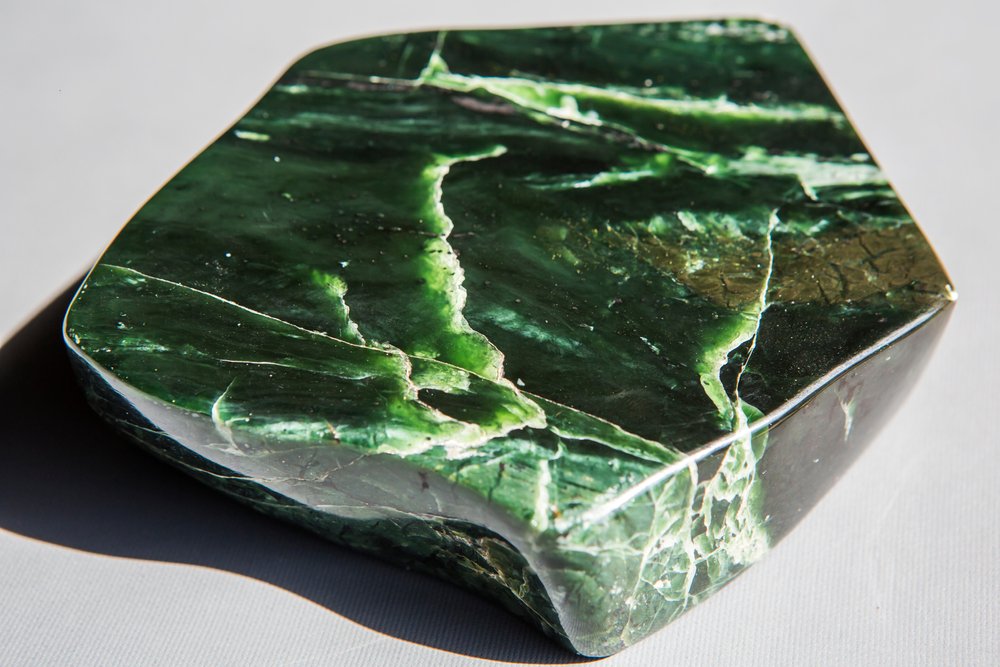
Jade is known since ancient times, but there is more than one stone that falls under this classification. Jade was, in the past, essentially shorthand for “green, carvable stone.” The two main stones that fell under this banner were nephrite and jade, although green jaspers have also been introduced into the mix on occasion. Nephrite jade is the “lesser” of the two main jade types, with jadeite being considered the superior material in general.
Related: Where To Find Jade In California
That’s not to say there’s anything wrong with nephrite. Nephrite jade is a common export from Canada, which supplies most of the lapidary nephrite to the market. Jadeite comes in a wider variety of colors, in addition to being a touch harder and denser than nephrite. Nephrite is found mainly in its green form, a translucent white form (“mutton fat jade”), and an opaque white form (“chicken bone jade”).
Nephrite jade is a relatively common beach find in Central and Northern California, often found intermixed with jaspers and agates that also regularly show up on the local beaches. This is a common feature of walkable beaches in California, due to the geological diversity just offshore a lot of interesting stones wash up. Nephrite is among the most sought-after, but it’s easy to confuse for green cherts and jaspers unless you remember to do a hardness or specific gravity test.
The best place in NorCal to take a look is at Jade Cove at the Southern End of Monterey County but it can be found in varying amounts in coastal waterways and beaches all the way north to Oregon.
2. Agate/Jasper/Chalcedony
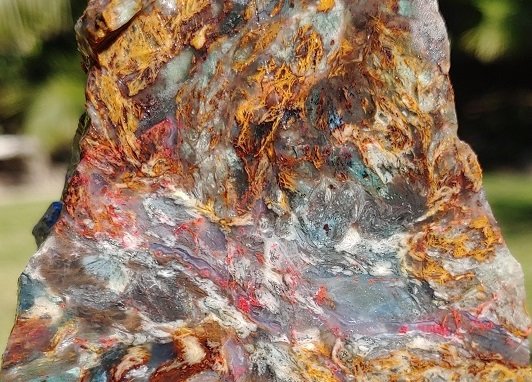
Agates, jaspers, and various varieties of colored chalcedony like carnelian are common finds across the state and NorCal is no exception. All three of these stones are based on a complex intergrowth of quartz and its polymorph moganite, usually known as chalcedony. There seem to be fewer well-defined agate varieties in California than in some regions, which is more a product of how many different types wash up on beaches than a mark against them.
Likewise, jasper and jasp-agates are also common finds in Northern California. You can find various types spread throughout the same area in many spots, and even similar-looking nodules may have radical differences once they’ve been sliced open.
That said, NorCal does boast two fairly unique varieties of cryptocrystalline silica. Marcasite plume agate is found in this area, with distinctive silver plumes contained in clear chalcedony. There is also “Plasma Agate” which is a catch-all term for a unique stone found near Clear Creek which is comprised of chalcedony and any of dozens of other minerals.
These stones are omnipresent on the beaches and in the waterways of Northern California. Further research can point you in the right direction if you’re looking for something specific.
3. Serpentine
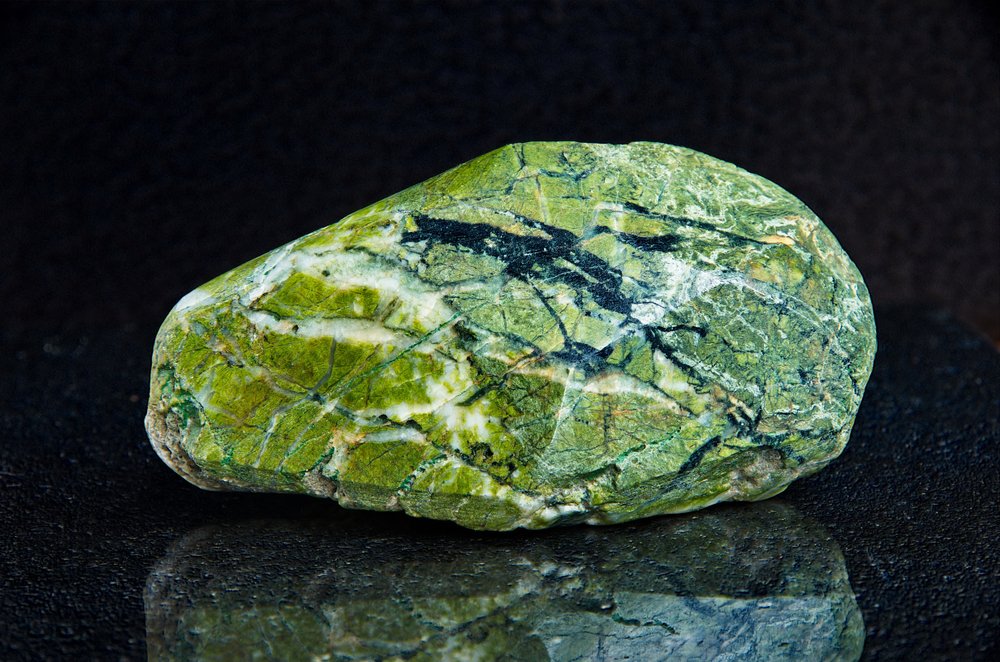
Serpentine is one of the serpentinite groups of minerals and is often used as a catch-all name for the same group. These minerals contain such “favorites” as chrysotile, which is the natural form of asbestos. These rocks are generally a mottled green and yellow, and it’s easily confused with more valuable minerals such as nephrite jade.
Serpentine can be distinguished from the various jade species by hardness or through a specific gravity test. The latter can be quite close, so you’ll need a very accurate scale but hardness is easier to determine in all cases but the very best serpentine. Serpentine is also the state rock of California.
In the past, serpentine was known for its close association with gold in addition to its beauty. While there were some efforts to remove it as the state rock in 2009, owing to the inclusion of chrysotile fibers in many samples, it appears to have remained in place for the moment. Serpentine in NorCal ranges from crumbly bits of green-ish stone to the so-called “noble serpentine” which is translucent and almost matches the beauty of jade.
Serpentine can be found in many waterways across the state but the best pieces often come from Trinity County near the Trinity River.
4. Rhodonite
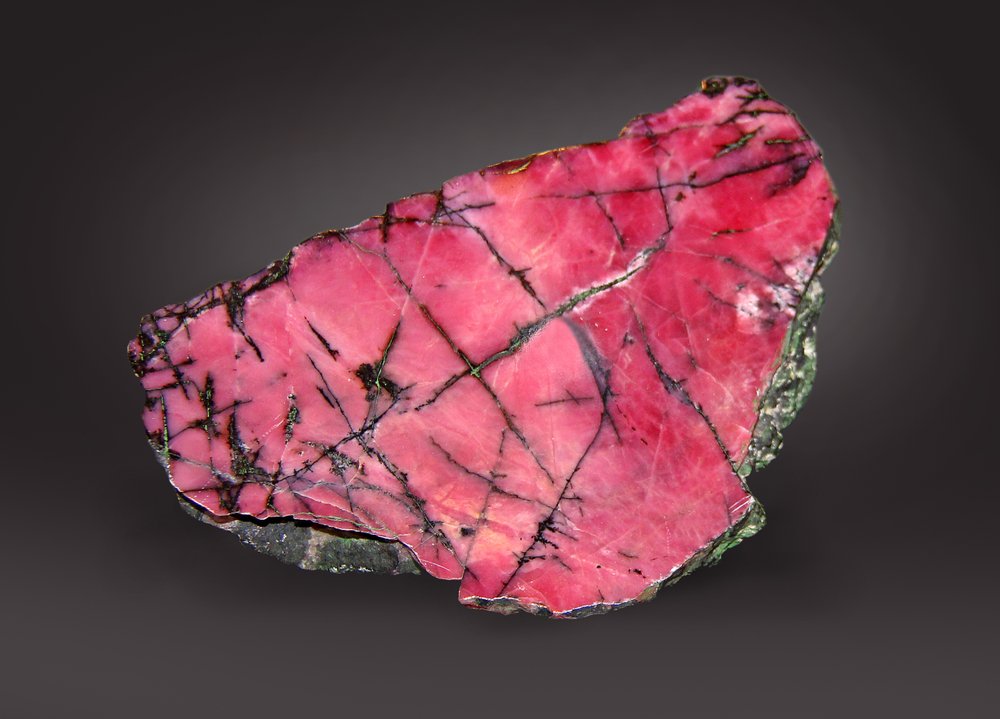
Rhodonite is a pink and black stone that’s prized by lapidaries. It shouldn’t be confused with the similarly named rhodochrosite, which is a separate mineral. Rhodonite is usually a massive stone, meaning its comprised of interlocking smaller crystals, and when a flat surface appears it will be pink and red with lines of black and dark grey. The black coloration occurs from the intermixing of manganese oxides with the pink minerals that make up the rest of the stone.
Rhodonite is far from a pure mineral. Indeed, the visual interest that it produces in most cases is due to the intermixture of several minerals. It’s often worked as an ornamental stone but doesn’t have a long history of use in that way. Instead, it’s appeared only more recently as the world of rocks and minerals has gotten wider and deeper.
Rhodonite from Northern California often comes from manganese claims, and it’s spread out across a large part of the state. This place produces some great samples of the minerals, often with minimal black coloration although it lacks the larger crystals of variants like fowlerite. Waterways near these areas also contain the rock in various amounts.
Those interested in looking for some would do well to take a look around the various manganese claims Southeast of Eureka and in Trinity County. Just make sure you’re legally allowed to collect before heading out.
5. Gold
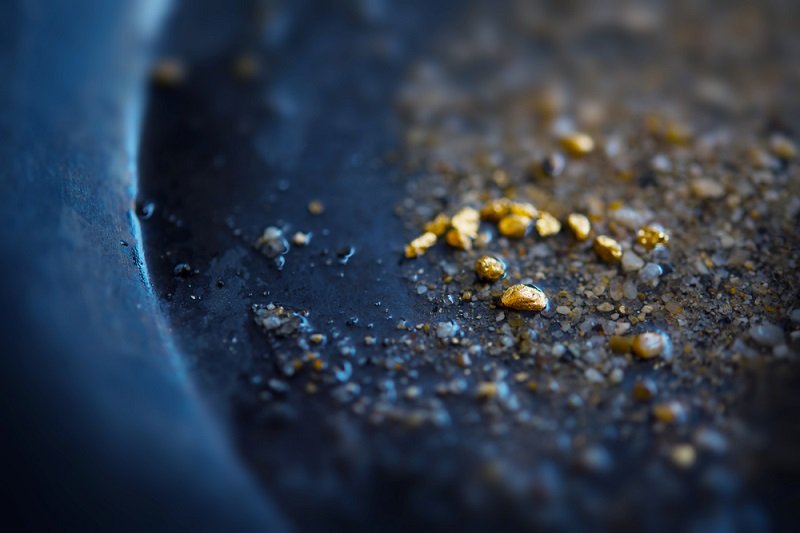
Gold is one of the most important elements in human history, and it’s also an important part of the history of the Sunshine State. The California Gold Rush brought thousands of people on a long and arduous journey across the United States in a time when such a distance was almost unimaginable. And it all started with the allure of glittering yellow metal in the Sierra Nevadas.
The gold industry in California remains to this day. There are thousands of active claims and a few hundred mines dedicated to pulling it from the Earth. California hosts many of the richest lodes in the US, and traces of them are spread through almost every creek and stream in the state to one degree or another.
Read More: 5 Of The Largest Gold Nuggets Ever Found
Northern California is particularly rich in gold, even compared to the Southern portion of the state. The geological occurrences necessary for gold to be brought to the surface have occurred across a huge part of the landmass, and enormous lodes have been found in may locations here. A hobbyist prospector with an afternoon to kill should be able to find gold in thousands of different locations across the state, although the chances of striking it rich are very low.
Since access to commercial gold mines is restricted, your best bet is to try panning streams and rivers near the foot of the Sierra Nevada mountain range. This area continues to yield some surprises for prospectors, but anyone looking to get their feet wet with prospecting would be well served in many other places in California.
6. Cassiterite
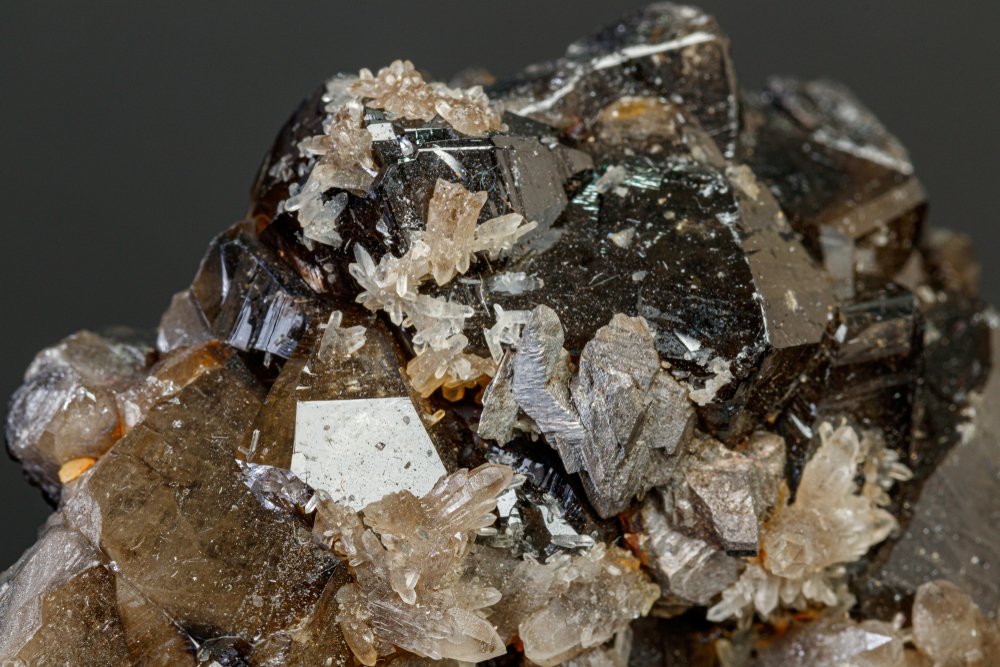
Cassiterite is an oxidized tin mineral and the primary ore of the metal. It’s remained that way for much of human history, although it’s not uncommon for better crystals to be used as mineral samples instead of being sent to the smelter. Cassiterite is generally in the form of a black crystal embedded in igneous rocks, but it also forms into larger botryoidal masses and crystals that can be found on their own.
While the vast majority of cassiterite is an opaque, black material that’s not always the case. Particularly fine specimens can be transparent and have a smoky grey color or even yellow-orange. These specimens are vanishingly rare, but are sometimes cut into gemstones. Unlike most crystalline ore gemstones, cassiterite is actually hard enough to be used in most pieces of jewelry and doesn’t need to simply be kept in a case by a collector.
Cassiterite from California is generally of the black-opaque type. It’s usually seen as either massive formations or in smaller, interlocked bipyramidal crystals. There’s a lot of it in the Southern portion of the state but it also crops up in the north if you know where to look.
Fortunately for the NorCal rockhound, cassiterite can be found in the area around Weaverville.
7. Epidote
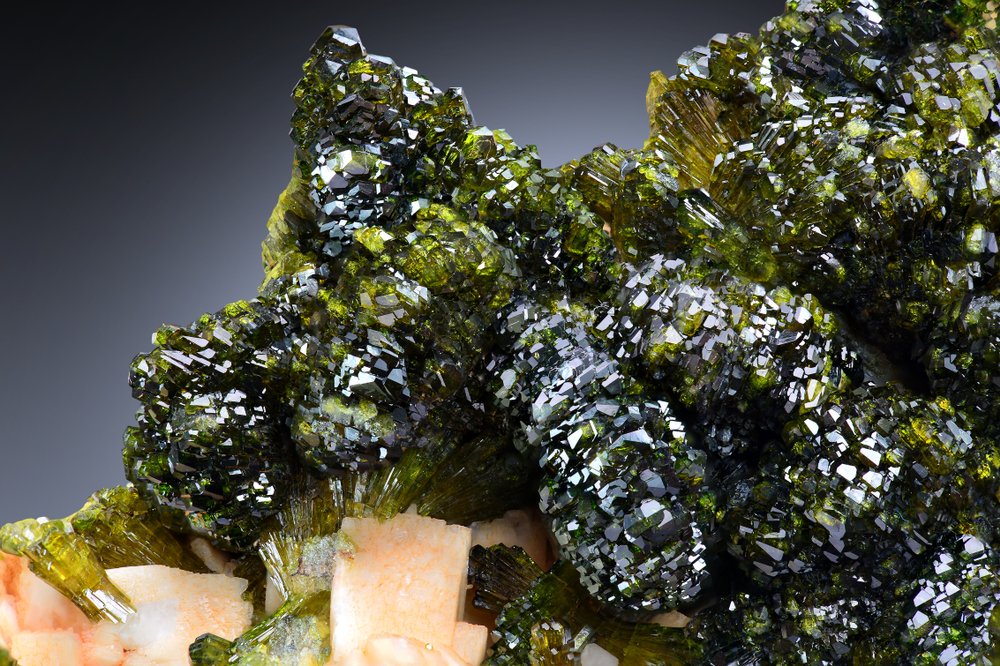
Epidote is a relatively common, green crystalline mineral. It also occurs in a crystalline black form, which isn’t quite as common. It’s also seen spread through massive igneous rocks like granite, where it appears as small green specks. Most of us have seen it in one form or another, but the crystalline form is the most highly sought-after.
Epidote occurs in many different crystalline forms. While there are well-formed, columnar crystals out there, they’re not the rule. On the contrary, epidote occurs as blades, fans, tabs, and even in botryoidal forms. I could make an entire display shelf just out of the different forms I’ve seen of the mineral over the years, and few non-rockhounds would realize they’re the same mineral at a glance.
The epidote of Northern California covers most of the range of different forms seen, it just depends on where you pick it up. While good samples are relatively common, I haven’t seen any truly impressive samples coming out of that region. That said, great samples are few and far between for every type of mineral and I certainly haven’t personally examined every collection. The potential is there, at least if the pieces I’ve had over the years are any indication.
If you’re looking in NorCal then your best bet is rockhounding in the Shasta-Trinity National Forest.
8. Quartz
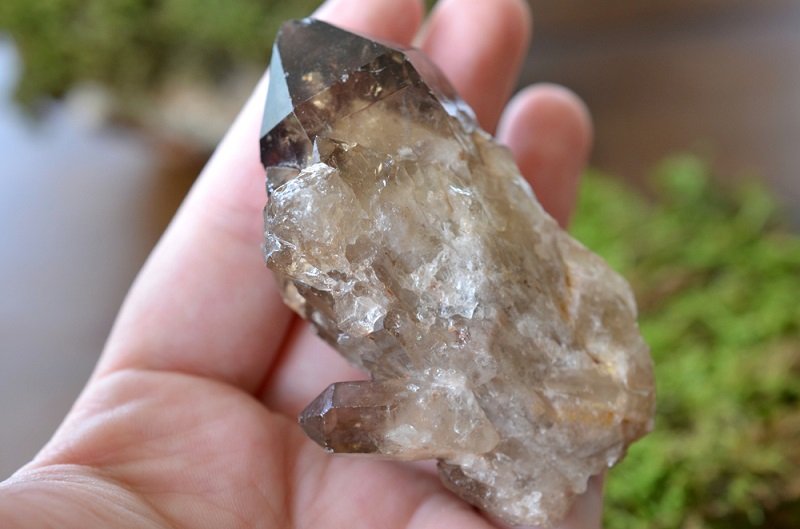
Quartz is the most well-known of the many crystalline minerals that can be found, the clear crystals have long been a stand-in for crystals of any sort. They have a distinctive hexagonal shape with a pyramidal termination and are often found in clusters, geodes, and occasionally as single points. While quartz is widely available, it’s still a common thing for rockhounds to chase down recreationally. There’s just something about pulling a crystal from the earth.
Quartz can be found in waterways as well, where it generally takes the form of rounded pebbles after a few hundred years of being roughly tumbled. This is the most common form found, often unrecognizable as quartz at first glance. For the crystals to have their tell-tale shape you’ll need to go further up, to the source.
Read More: Different Types of Quartz Varieties
Quartz can be colored as well. Citrine, prasiolite, amethyst, and others are all quartz varieties with various replaced atoms causing a color shift. Others are colored by large amounts of inclusions, such as the hematite found in strawberry quartz.
While there are a few locations in Norcal this mineral can be found, Crystal Mountain near Loyalton is the best spot to head out to for a purposeful trip.
9. Rhodochrosite
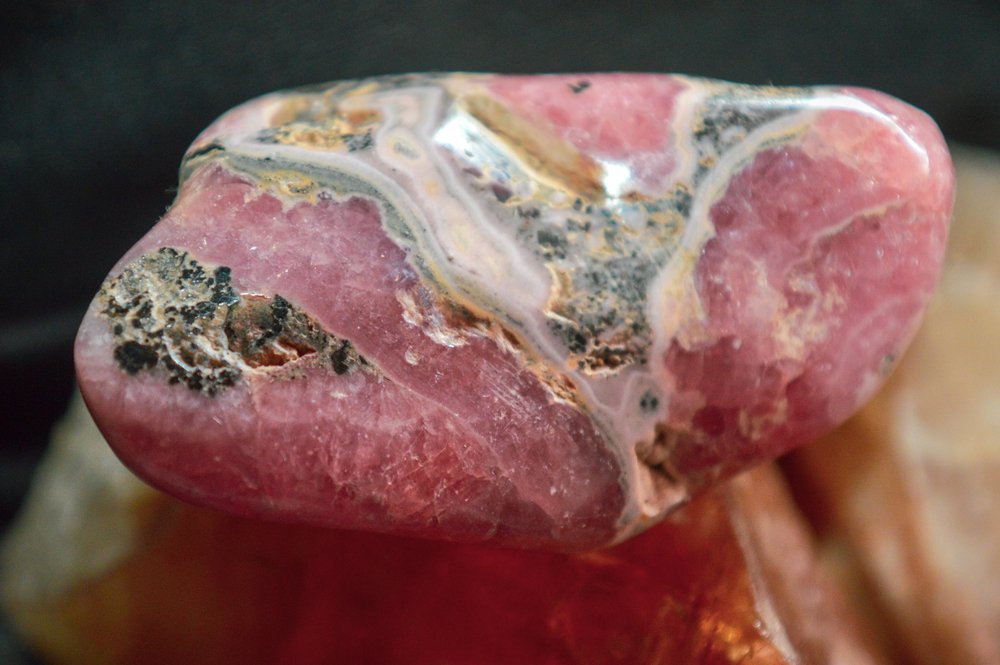
Rhodochrosite is a pink mineral, formed of manganese carbonate. Most people are familiar with the massive form: a pink and white mottled rock. It can be easily distinguished from rhodonite by the lack of black coloration across its face. Rhodochrosite is generally found in this form, intermixed with metamorphic stones like marble.
The more valuable form of this mineral comes as pink rhomboidal crystals. These are much rarer than the massive versions of the mineral, and they’re much more valuable. Pure rhodochrosite has a shocking, neon pink coloration and is sometimes cut as a gemstone. These faceted gems are prized by collectors, but they’re a bit too soft for most jewelry use without a special protective setting.
I haven’t seen any samples of crystalline rhodochrosite come out of Northern California, but it may be possible. Instead, the massive form is relatively easy to find. It’s closely associated with manganese deposits, and can often be found in waterways near the source. If you get too far away the stones simply won’t survive due to running a 3.5-4.0 on the Moh’s scale.
The best rhodochrosite from this region comes from the Coastal Range near Mendocino. There’s more of it as well, easiest to locate by looking for known deposits of manganese.
- Online rock and mineral club for collectors of all levels!
- Find community with like-minded rock and mineral enthusiasts.
- Monthly Giveaways!
- Free Access to Entire Digital Library of Products (annual memberships)


